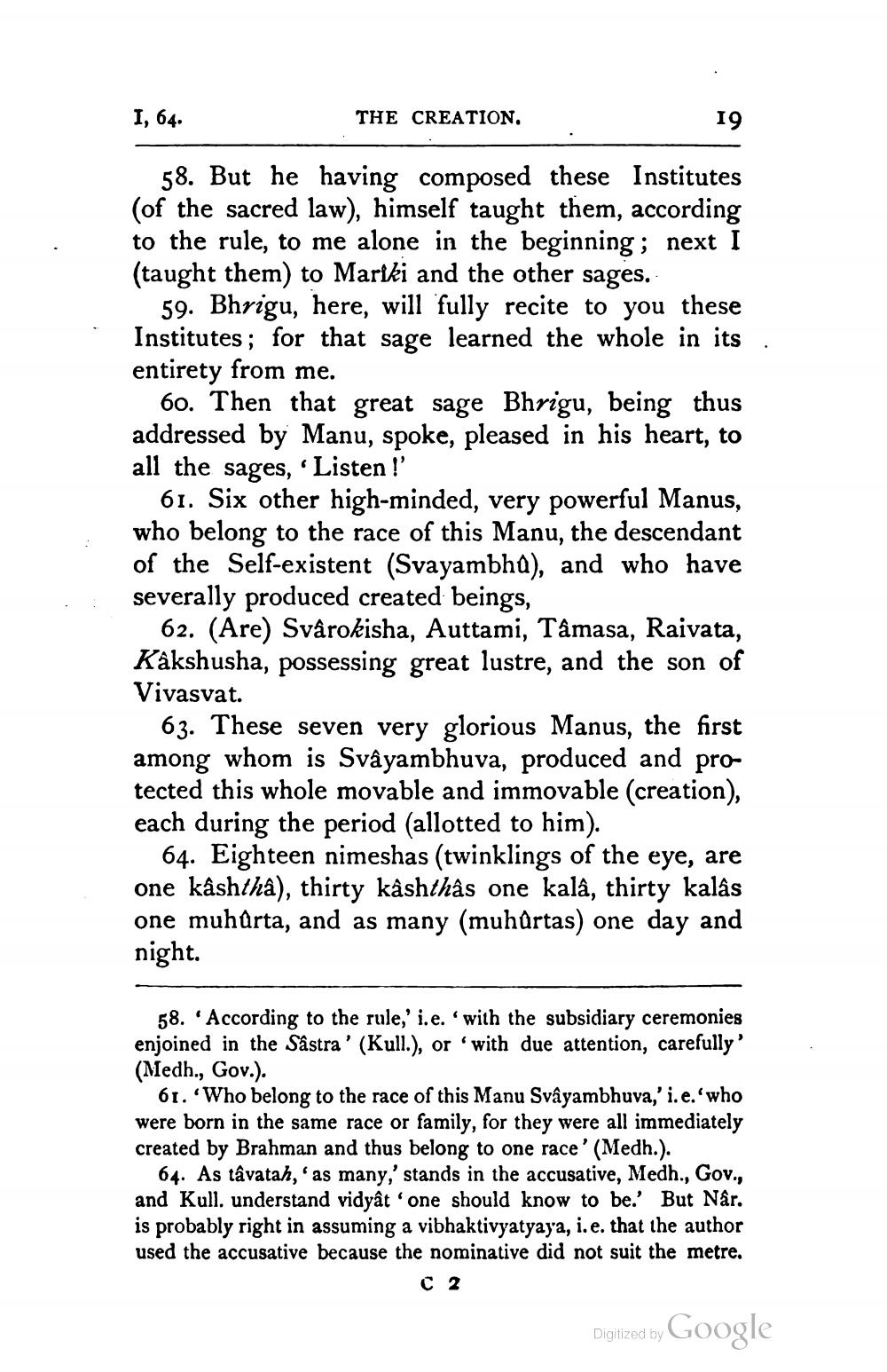________________
I, 64.
THE CREATION.
19
58. But he having composed these Institutes (of the sacred law), himself taught them, according to the rule, to me alone in the beginning ; next I (taught them) to Mariki and the other sages.
59. Bhrigu, here, will fully recite to you these Institutes; for that sage learned the whole in its entirety from me.
60. Then that great sage Bhrigu, being thus addressed by Manu, spoke, pleased in his heart, to all the sages, Listen!'
61. Six other high-minded, very powerful Manus, who belong to the race of this Manu, the descendant of the Self-existent (Svayambha), and who have severally produced created beings,
62. (Are) Svârokisha, Auttami, Tâmasa, Raivata, Kakshusha, possessing great lustre, and the son of Vivasvat.
63. These seven very glorious Manus, the first among whom is Svayambhuva, produced and protected this whole movable and immovable (creation), each during the period (allotted to him).
64. Eighteen nimeshas (twinklings of the eye, are one kâshthâ), thirty kashthâs one kalâ, thirty kalâs one muhurta, and as many (muhurtas) one day and night.
58. According to the rule,' i.e. with the subsidiary ceremonies enjoined in the Såstra' (Kull.), or with due attention, carefully' (Medh., Gov.).
61. Who belong to the race of this Manu Svayambhuva,' i.e.'who were born in the same race or family, for they were all immediately created by Brahman and thus belong to one race' (Medh.).
64. As tâvatah,' as many,' stands in the accusative, Medh., Gov., and Kull. understand vidyât 'one should know to be.' But Nar. is probably right in assuming a vibhaktivyatyaya, i.e. that the author used the accusative because the nominative did not suit the metre.
C2
Digitized by Google




